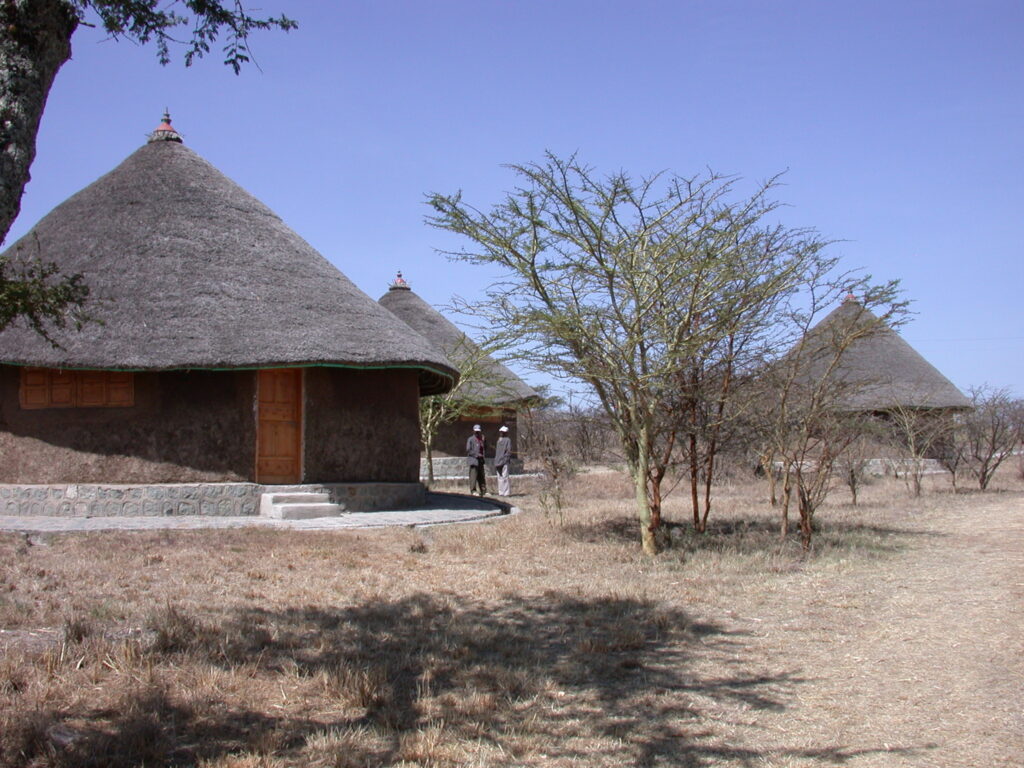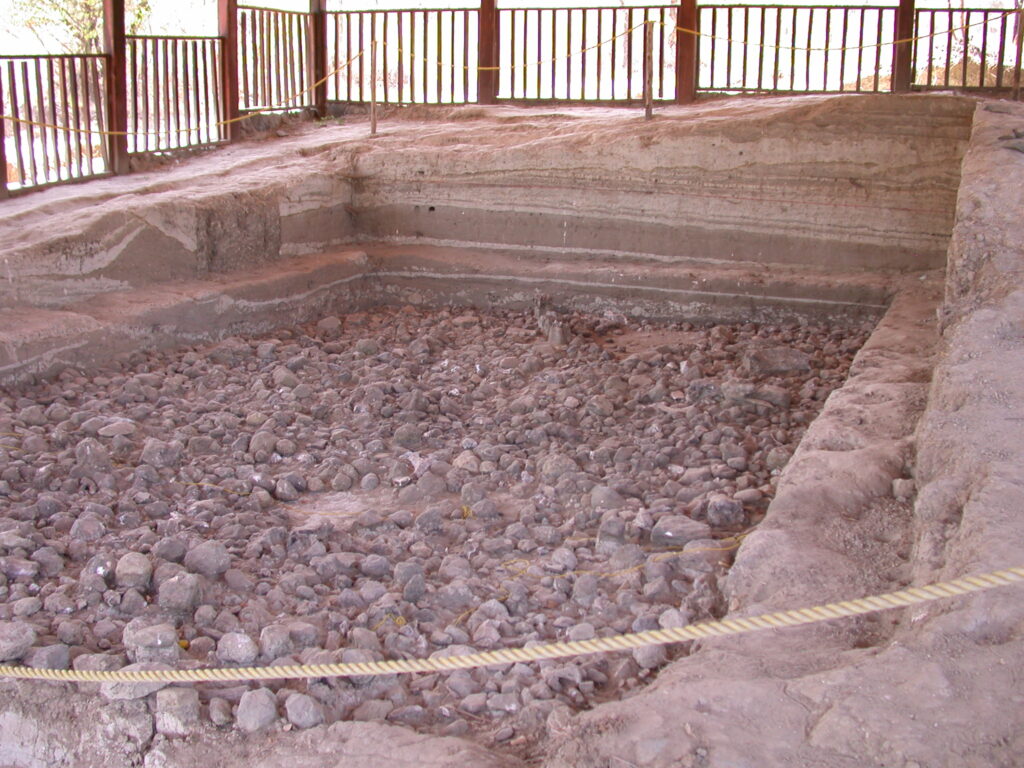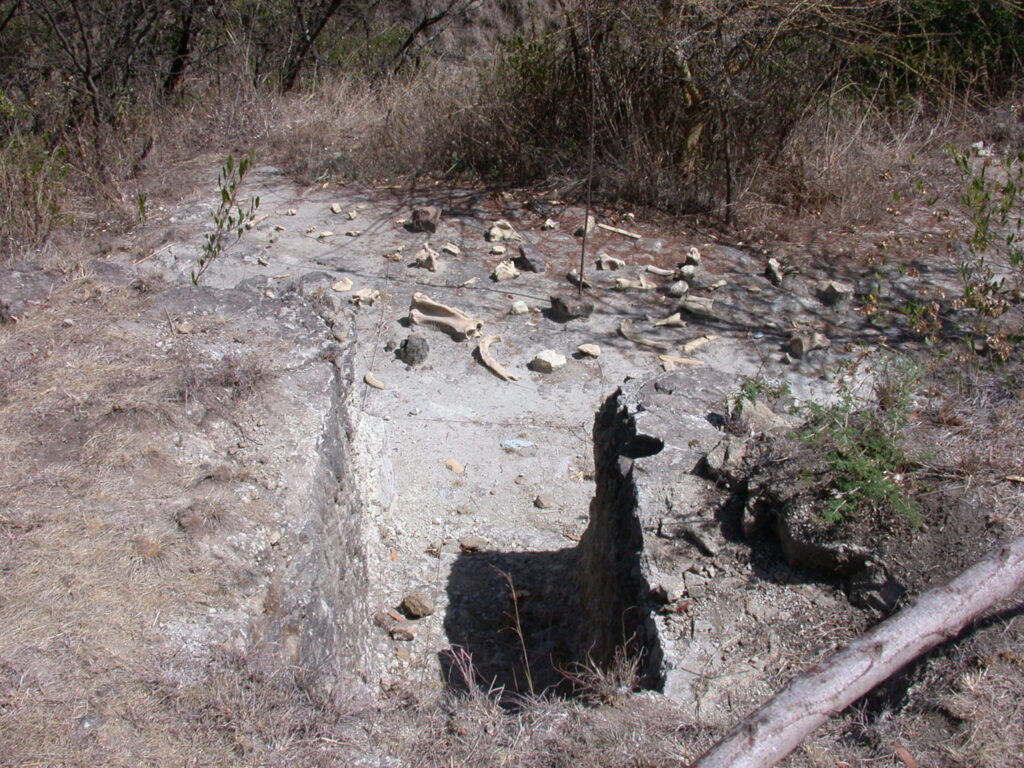This is the map for the trip to Melka Kunture and surrounds.
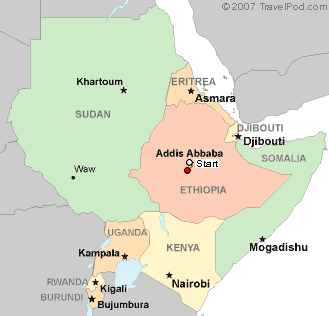
March 1 was my big day for visiting the human origins discovery site at Melka Kunture, south of Addis Ababa. Village Ethiopia sold me a little tour that featured Melka Kunture along with a visit to the stelae at Tiya and to the Adadi Mariam church.
The 4WD vehicle driver picked me up at 8:00am and we set off on the trip. I was struck again by the Ethiopian construction crews’ use of wooden scaffolding even for very tall buildings. A herd of goats brought traffic to a halt. The countryside was beautiful.
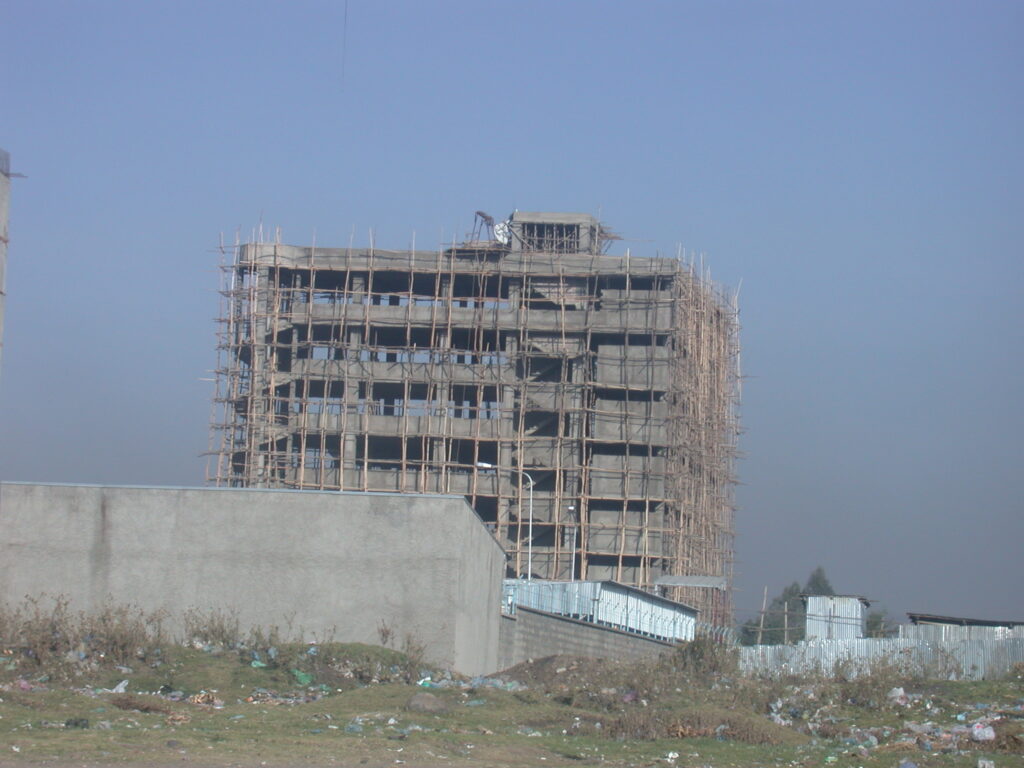
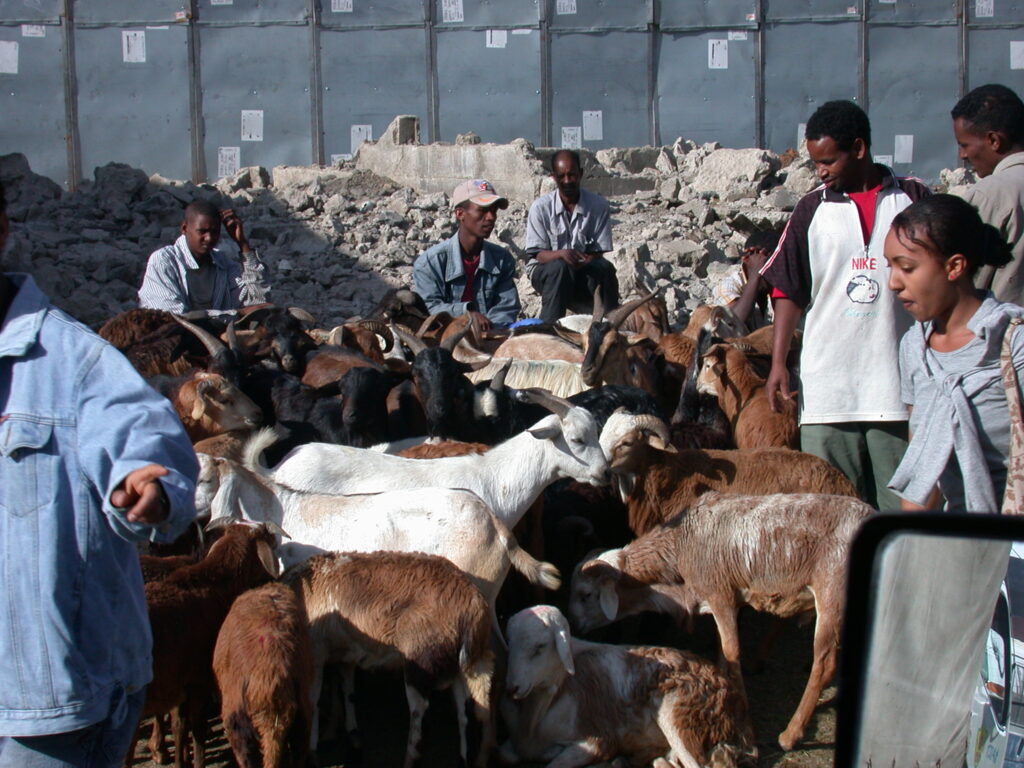
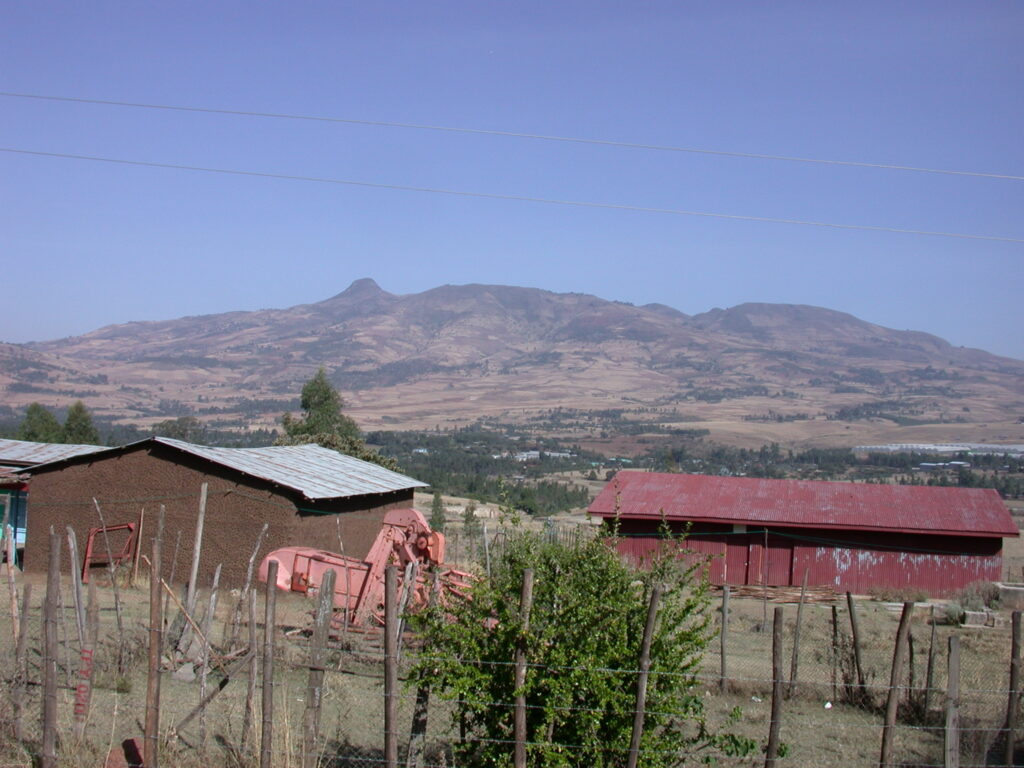
In fact, all varieties of animals block the road, including these donkeys. I’d describe the terrain as semi-desert because the trees and plants still look green and obviously get some regular water, although in some places the terrain is quite dry.
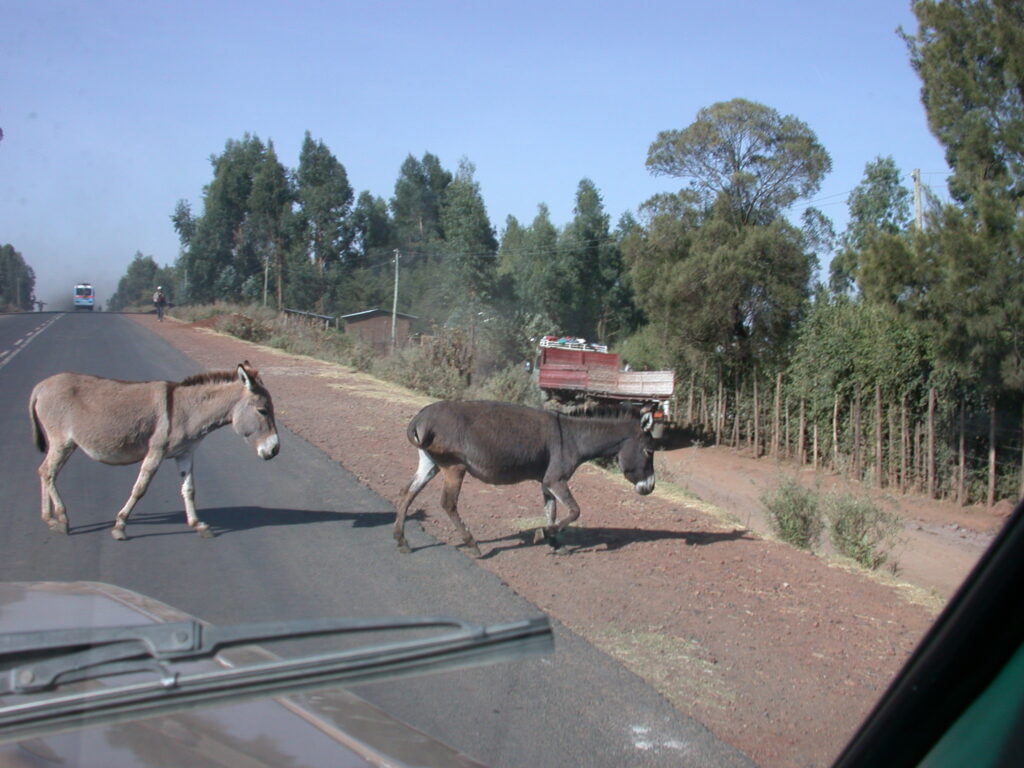
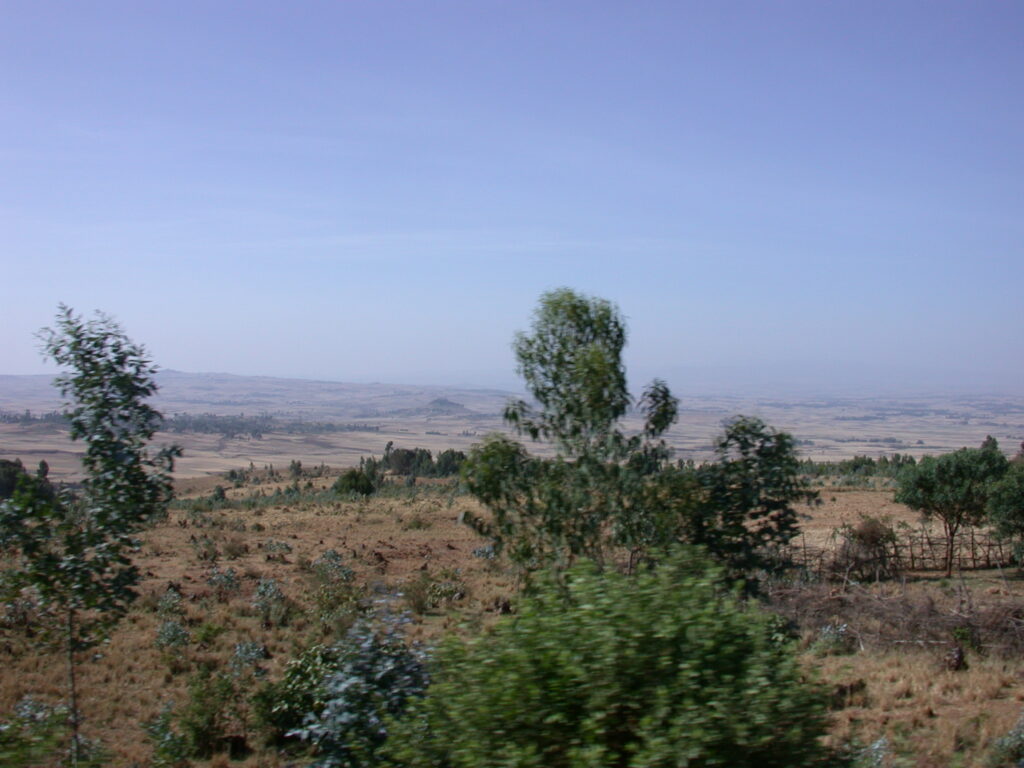
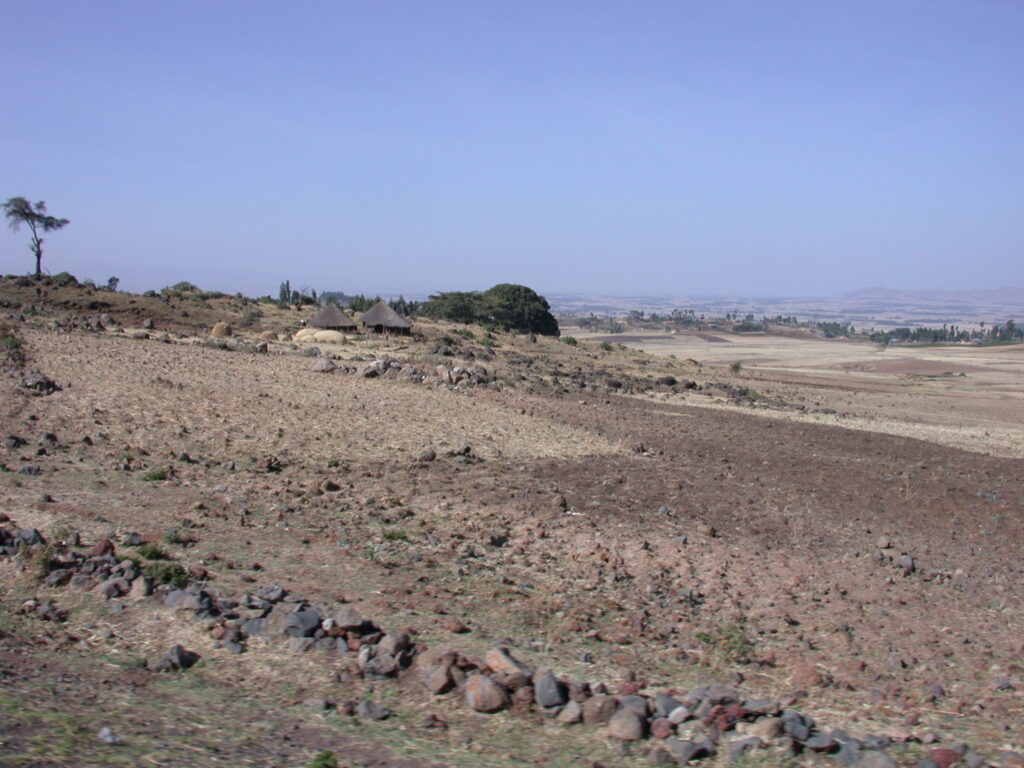
Farmers living in the tukuls in the countryside tuck their teff mounds nearby. Teff is the staple grain of most of Ethiopia and they use it to make the tasty injeera bread consumed all over the country.
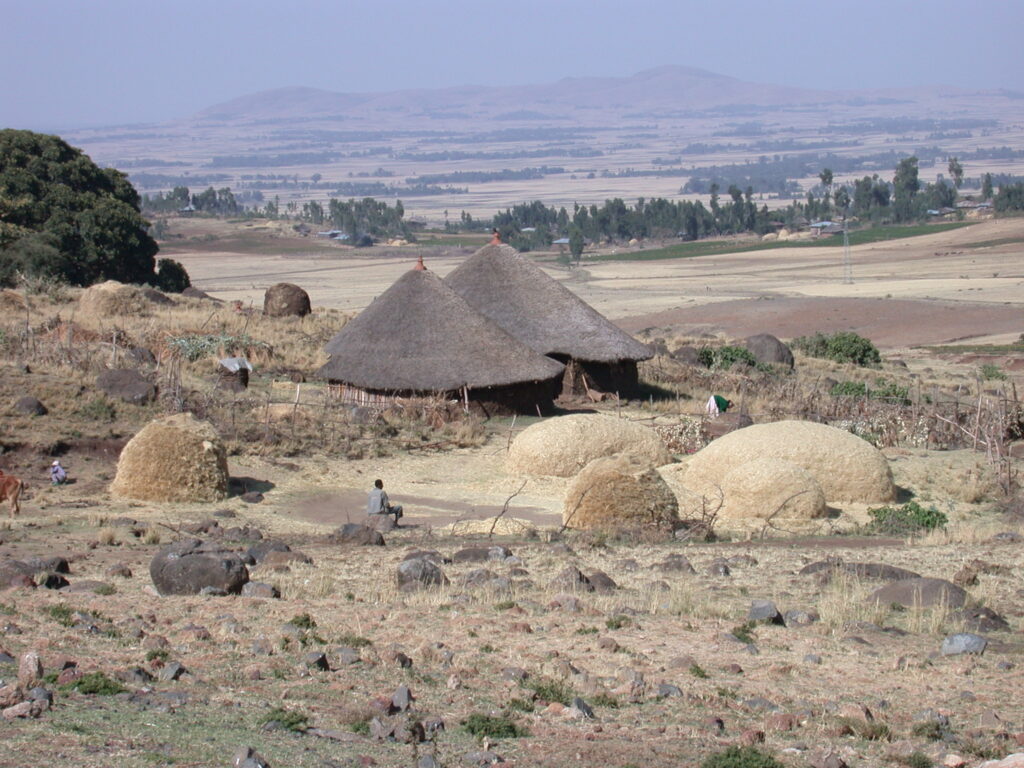
The Melka Kunture human discovery site had a fancy gate, and after checking our papers, the guard let us in. The exhibits at the site are in several tukuls. They describe all the well-known human discovery sites, but Herto is not highlighted, probably because Herto happened after the scientists had set up the Melka Kunture exhibits.
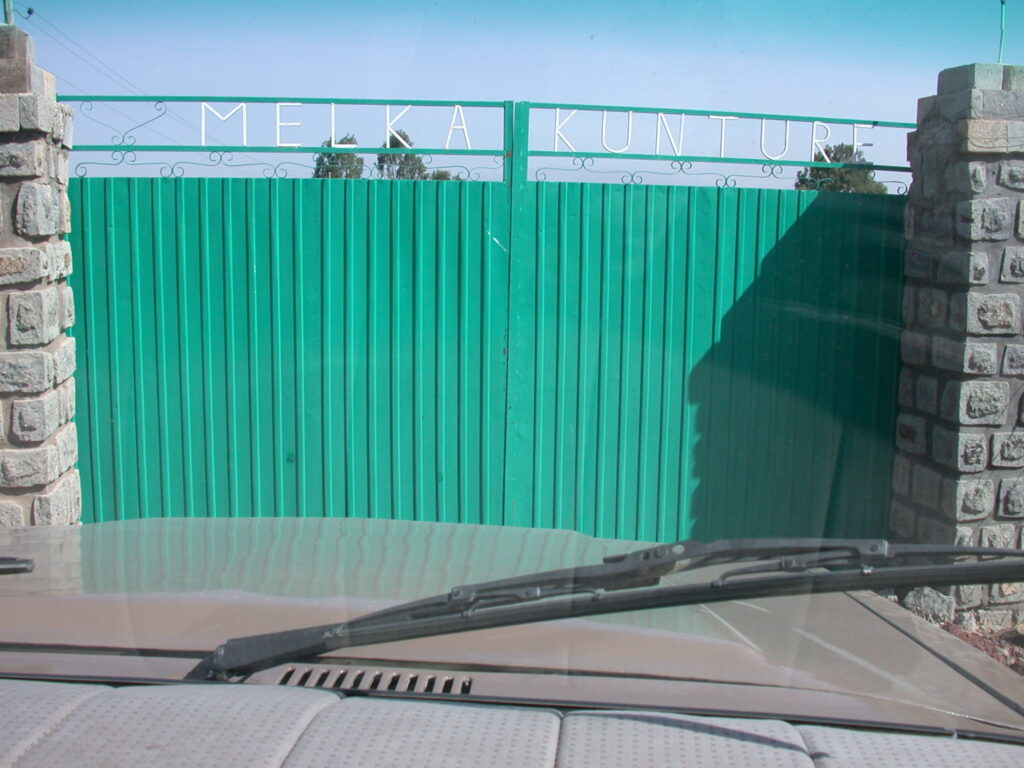
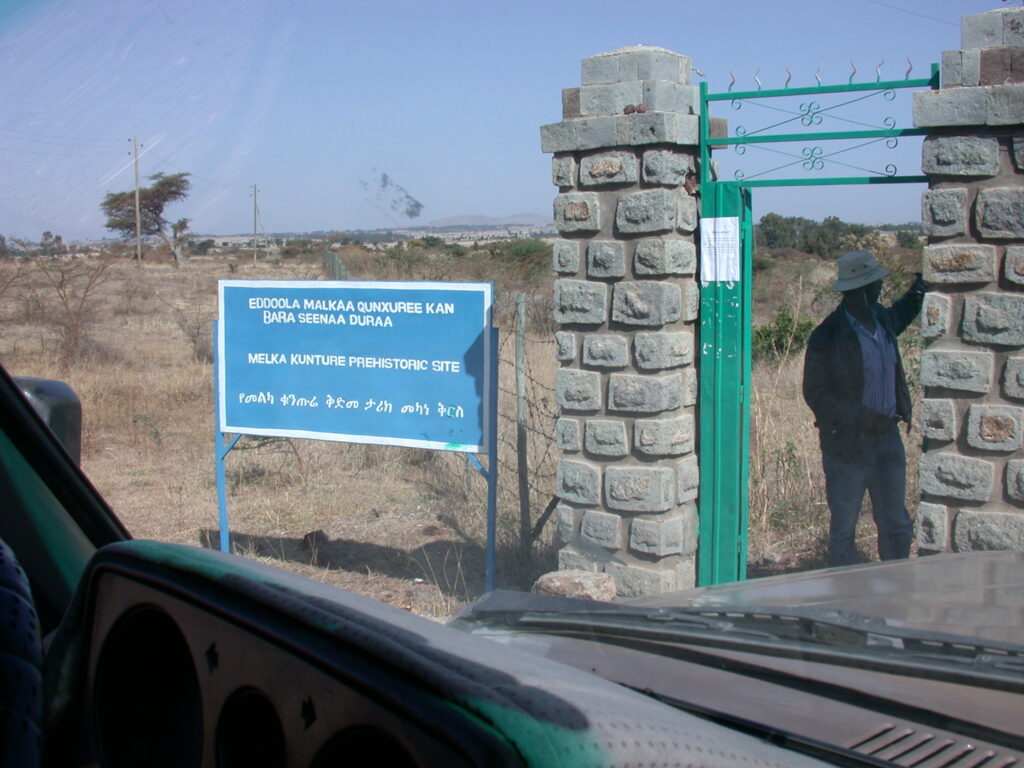
Because the Melka Kunture exhibits display replicas of fossil Homo sapiens skulls along with those of precursor and related species, the site provides an excellent illustration of the human evolutionary process. I focus mainly on the Homo sapiens remains in the photos I present here, including information on the Omo, Melka Kunture, and Herto discovery sites. The fossil skull replicas shown below are: Homo sapiens skull fragements, 300,000 – 200,000 years ago, from Garba III site at Melka Kunture, Ethiopia; Homo sapiens, 90,000 years ago, from Qafzeh, Israel; Homo neanderthalenthis, 45,000 years ago, from Amud, Israel; and Homo sapiens sapiens, 15,000 – 9,000 years ago, from Border Cave, South Africa.
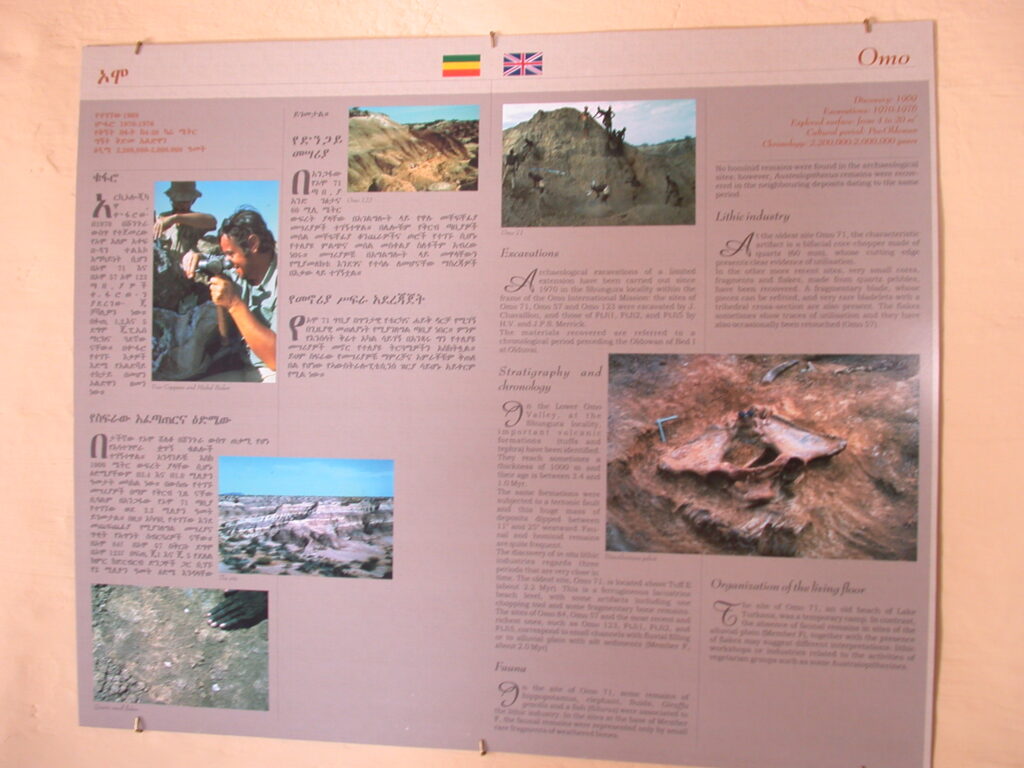
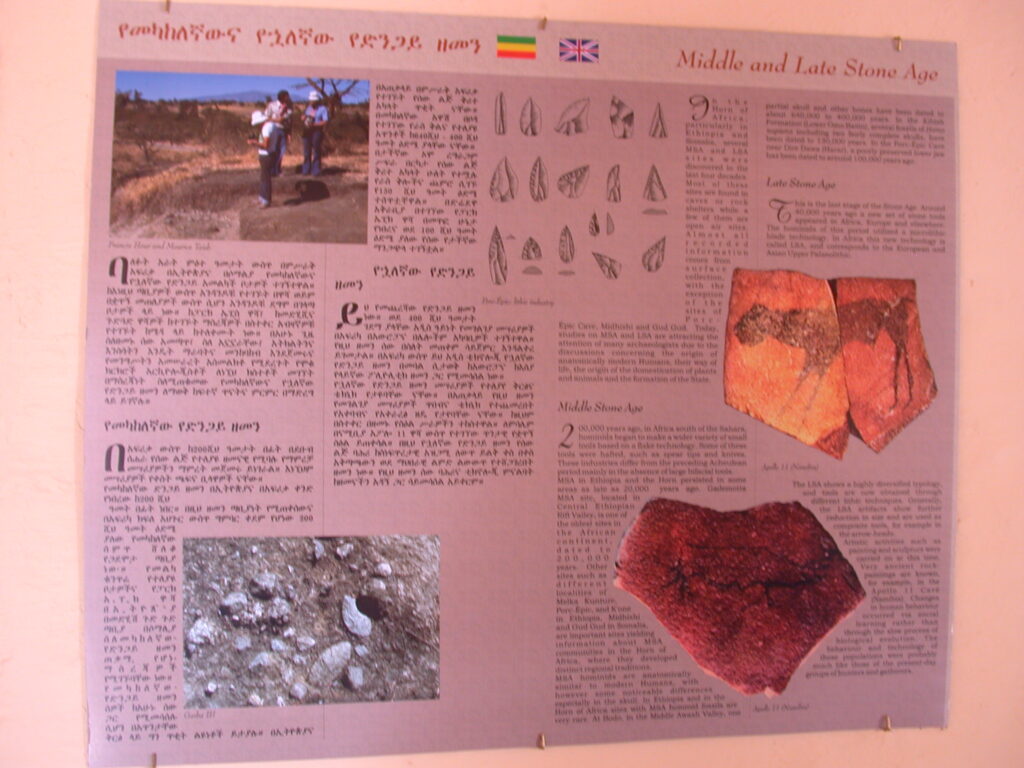
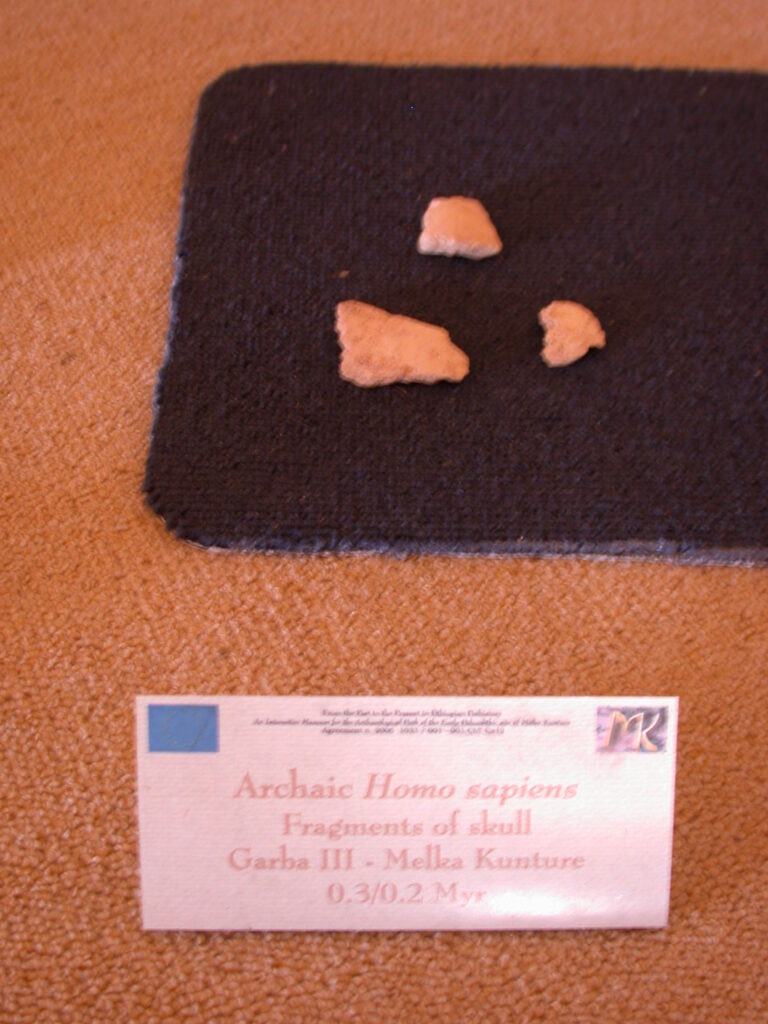
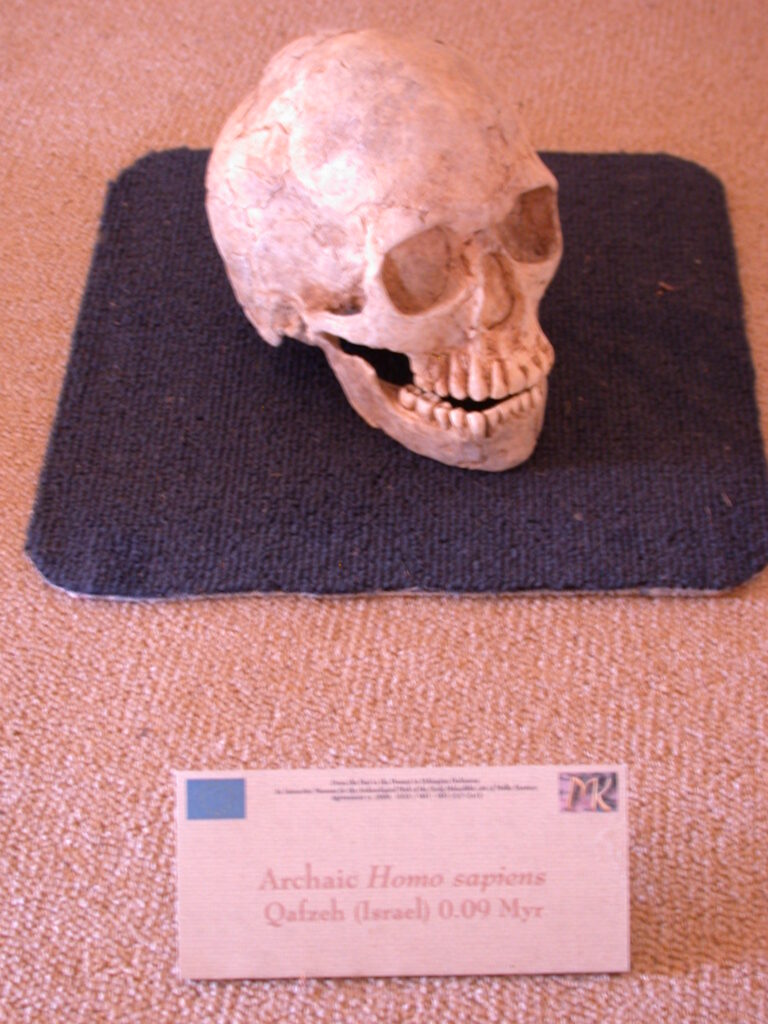
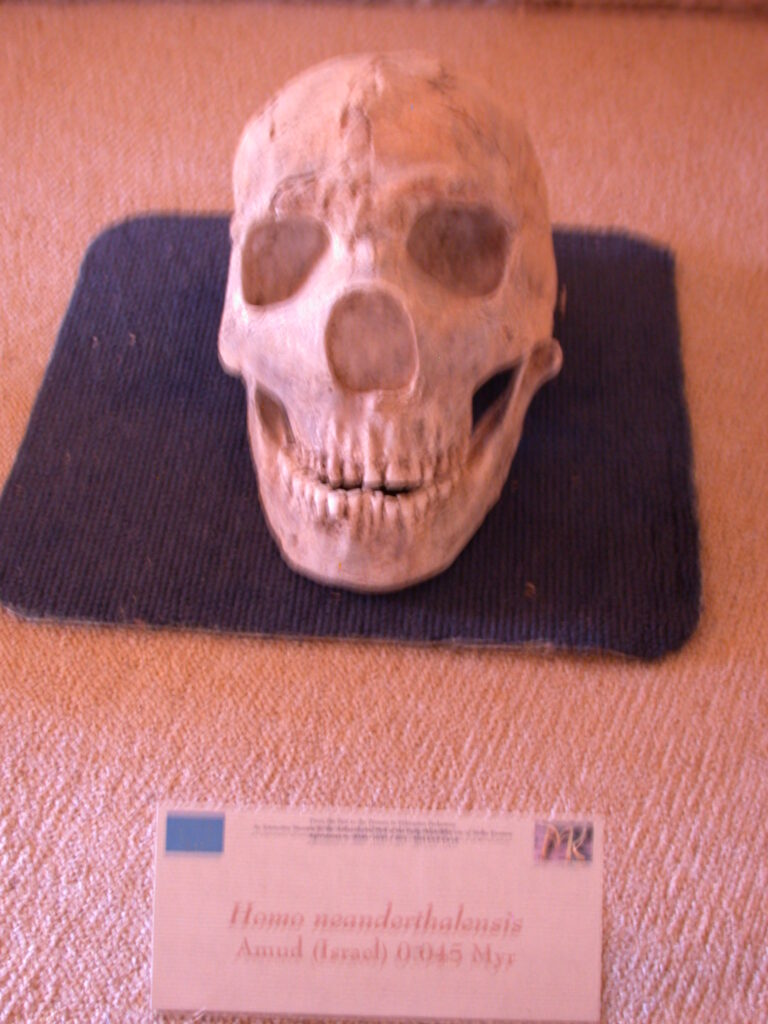
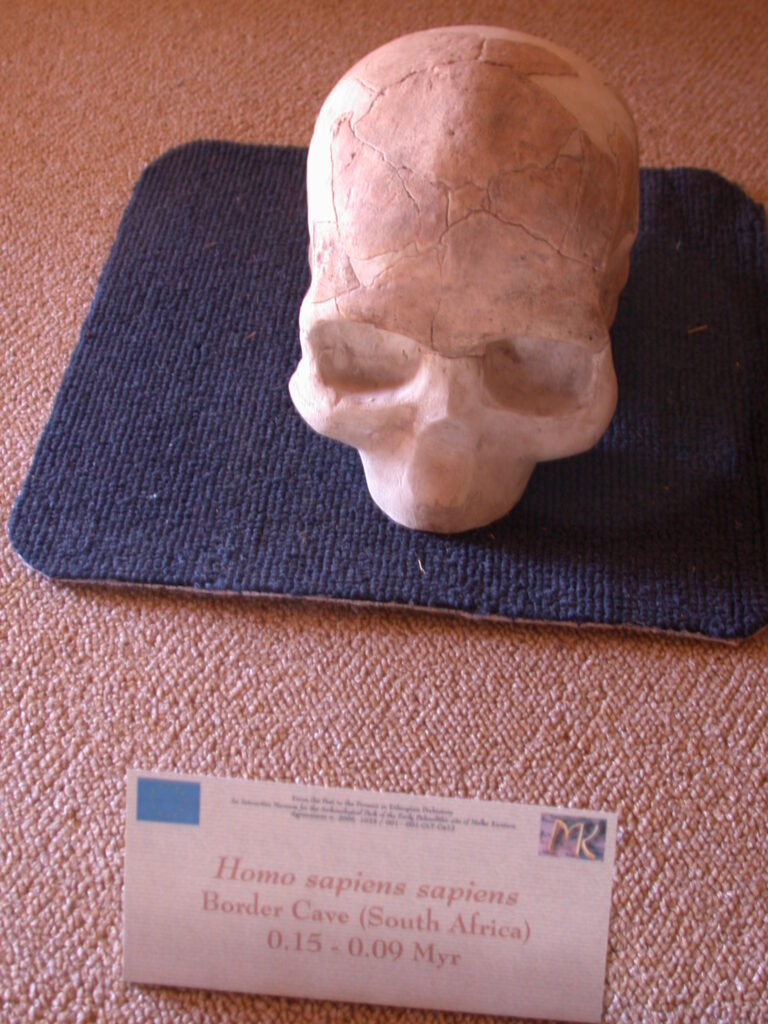
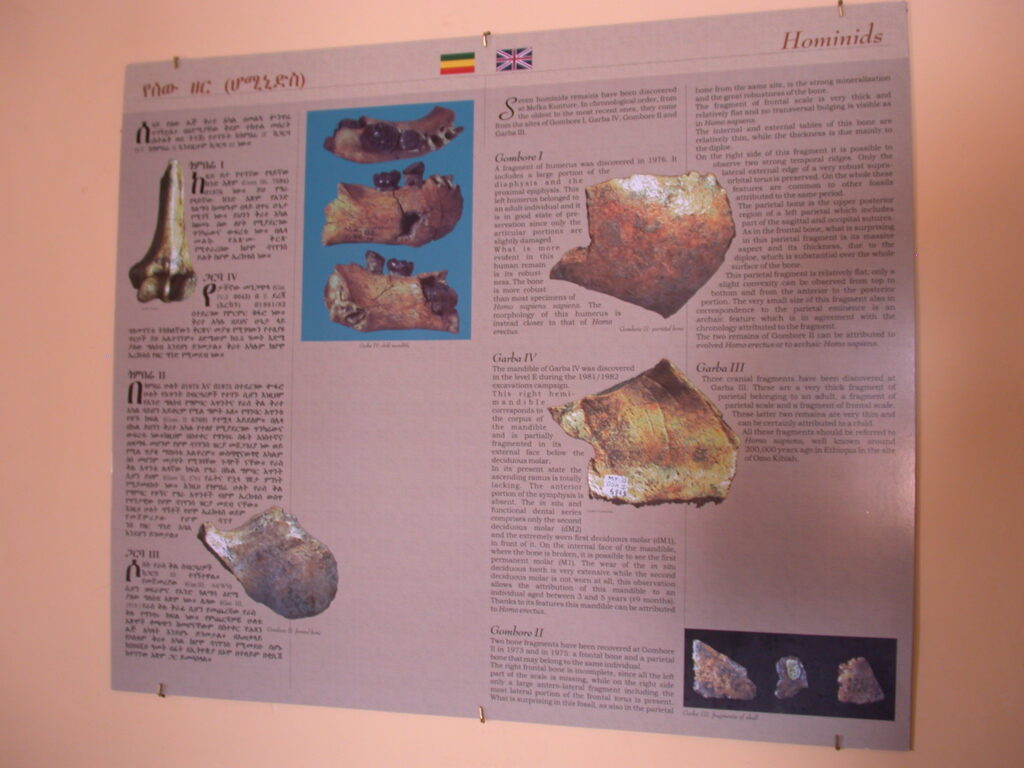
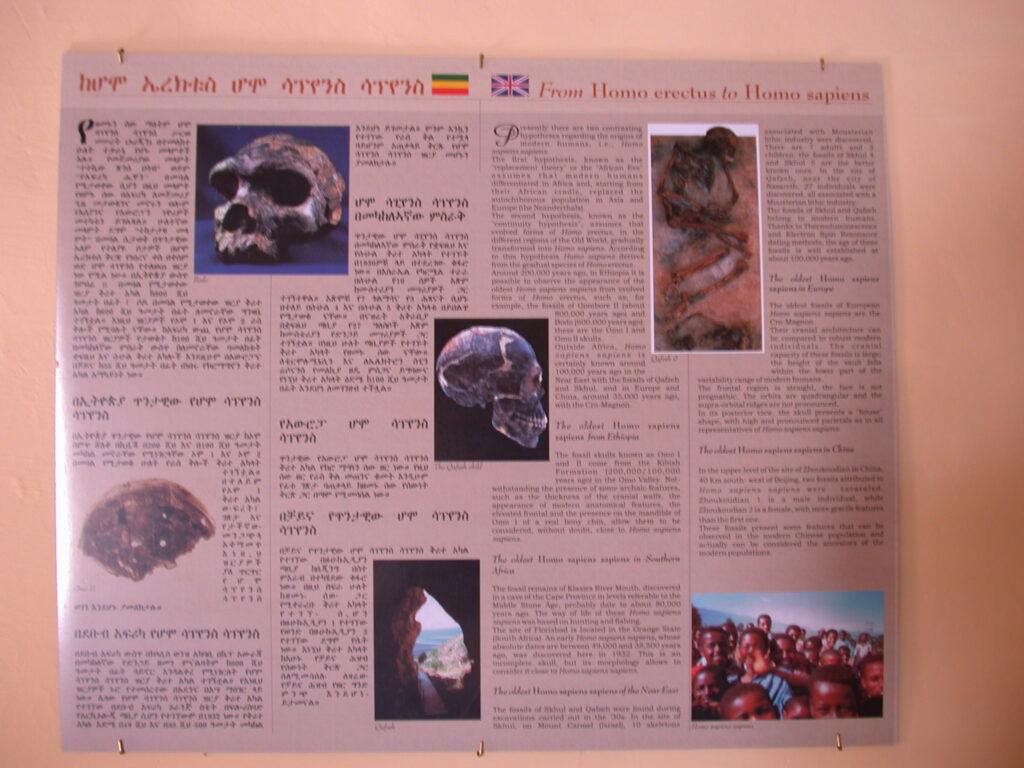
The exhibits display the tools found with each evolutionary ancestor or relative and the presentations on tool-making are the best I have seen, especially as far as illustrating the steps of the Levallois method. Human use of the Levallois toolmaking method represents a major step forward in human thought by being able to conceive of how a tool should appear within the materials at hand, then constructing the tool to the mind’s notion of how it should appear. I present here also the full array of Garba III tools since they represent early Homo sapiens tools.
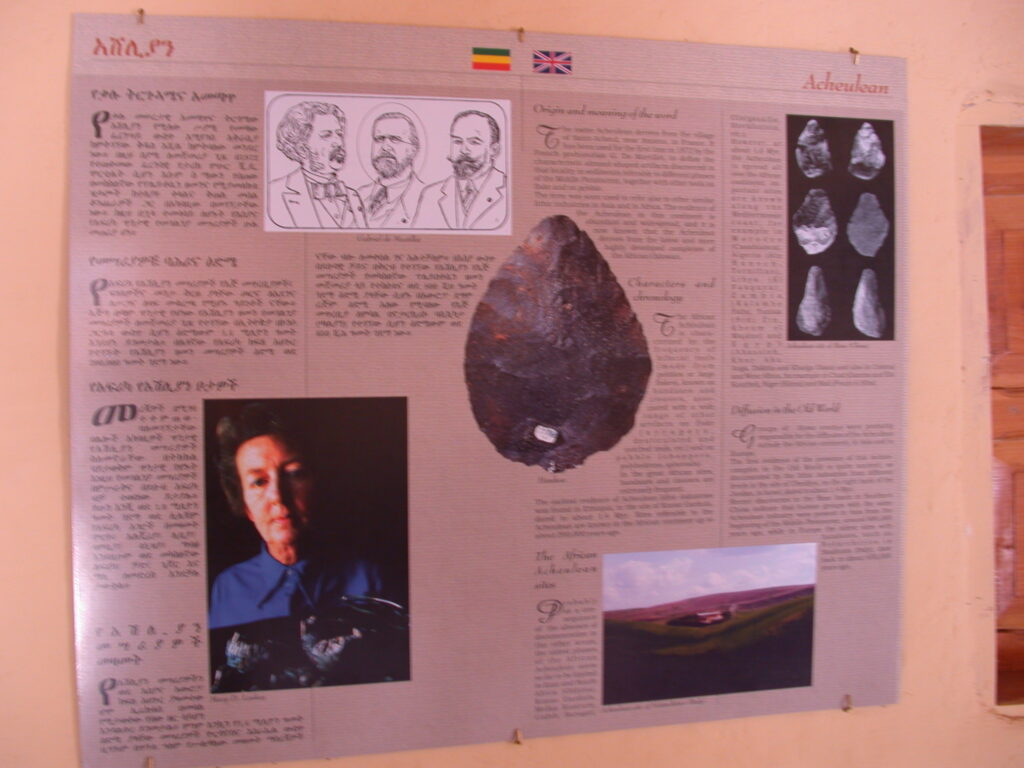
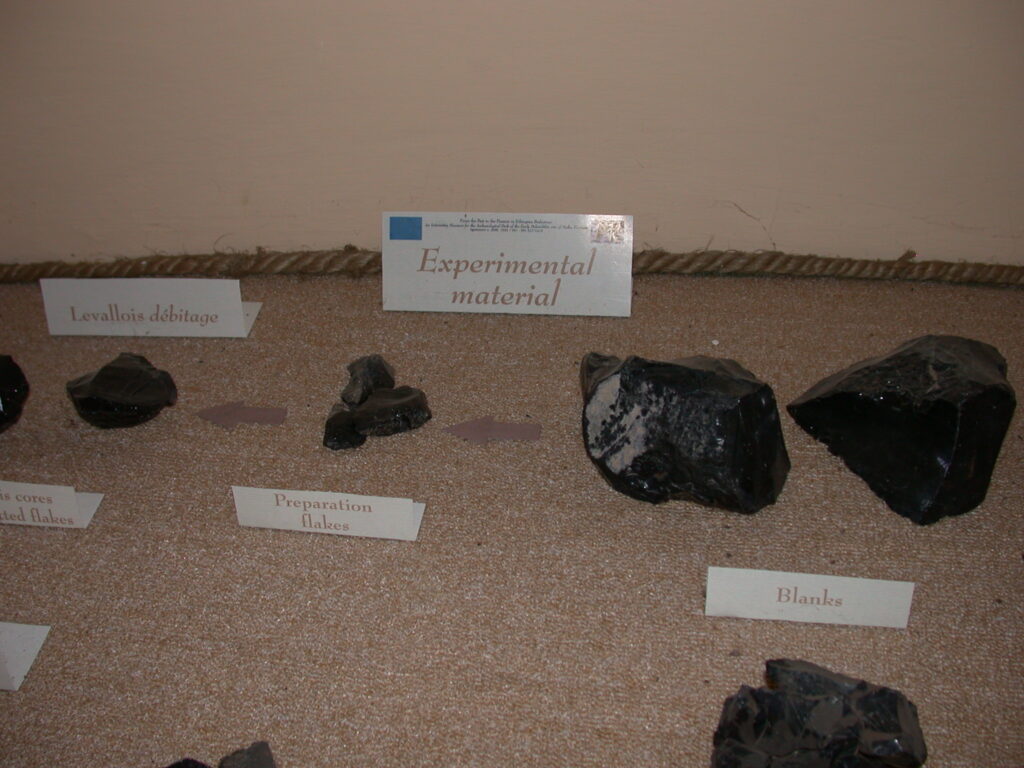
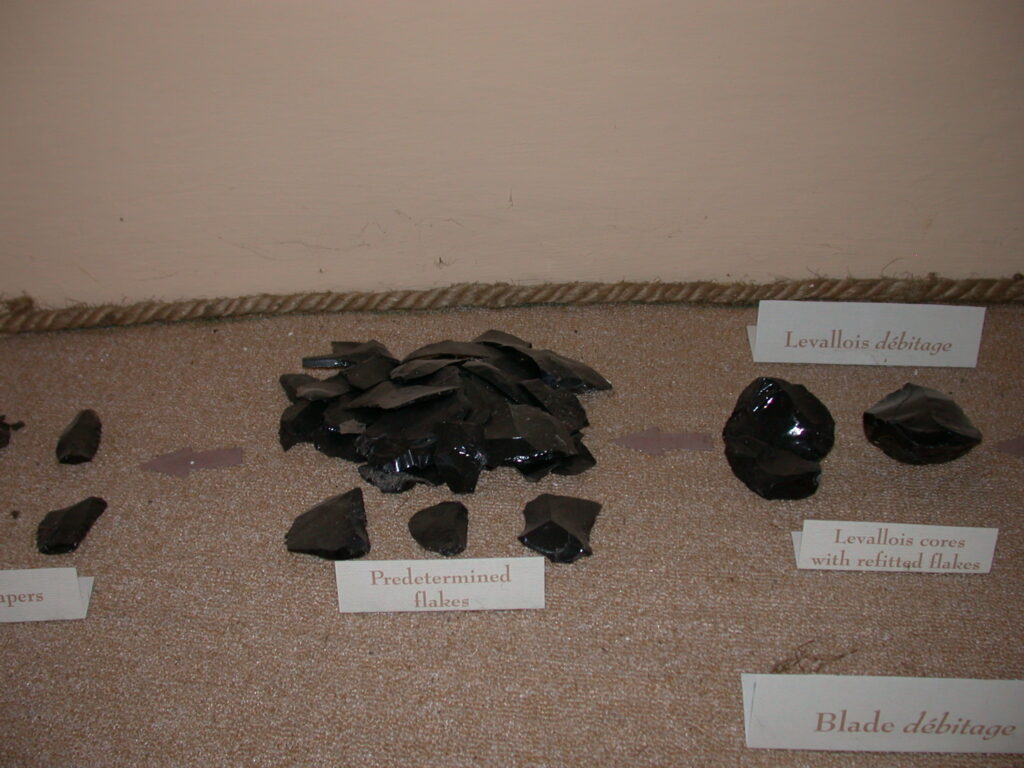
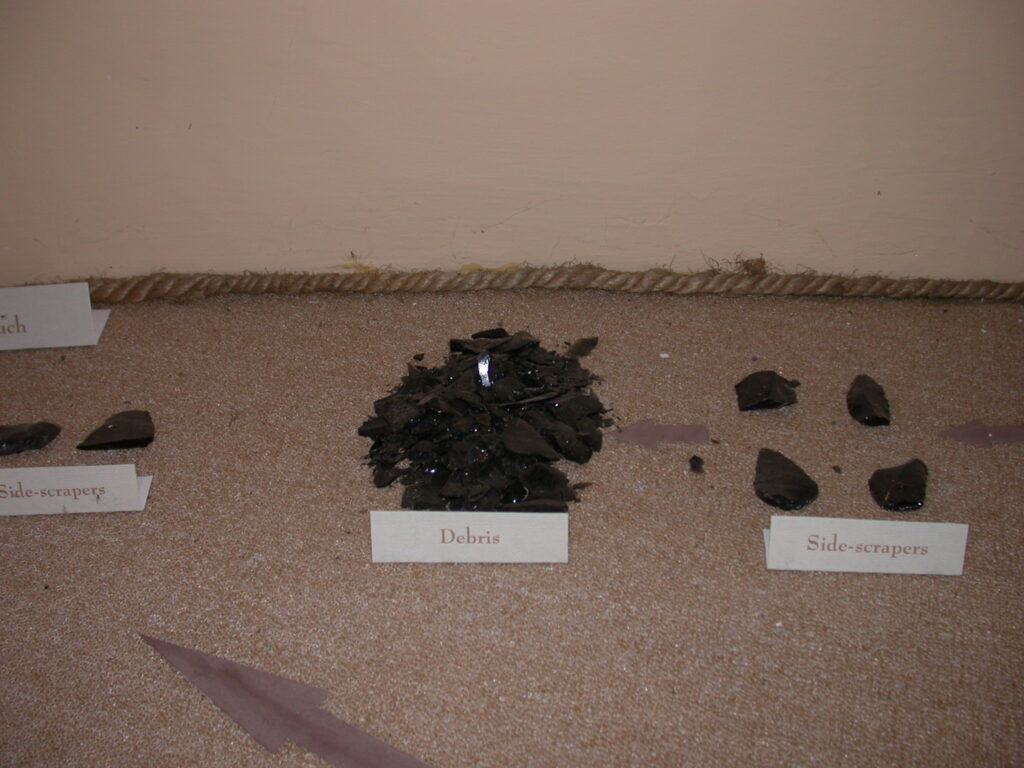
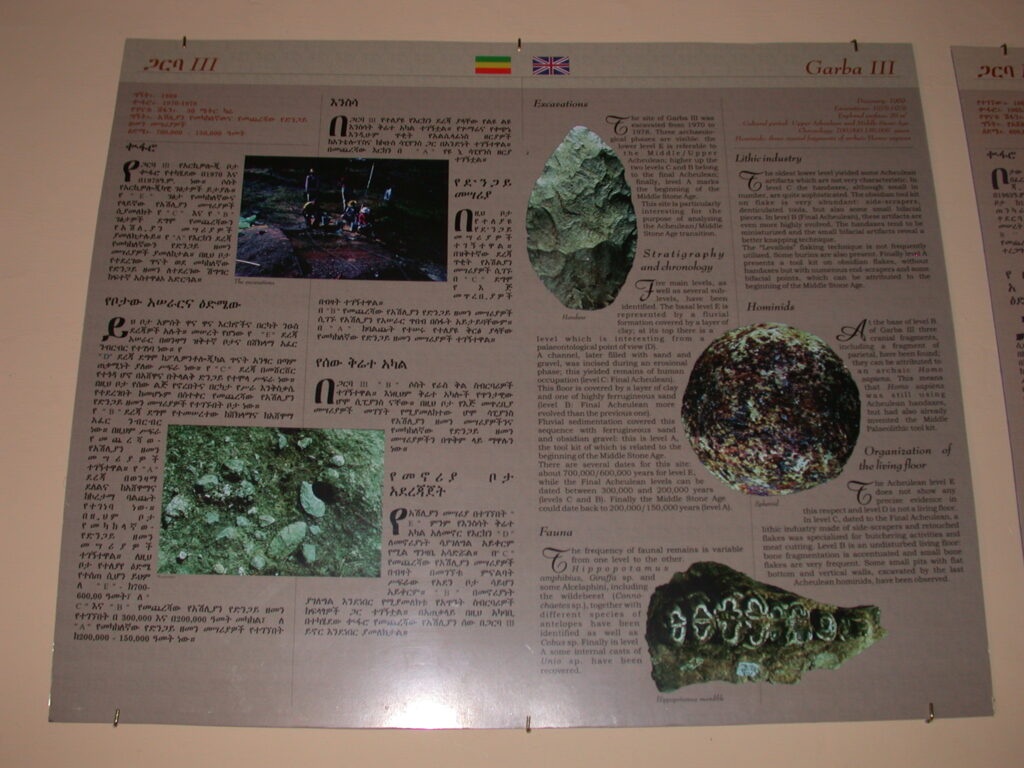
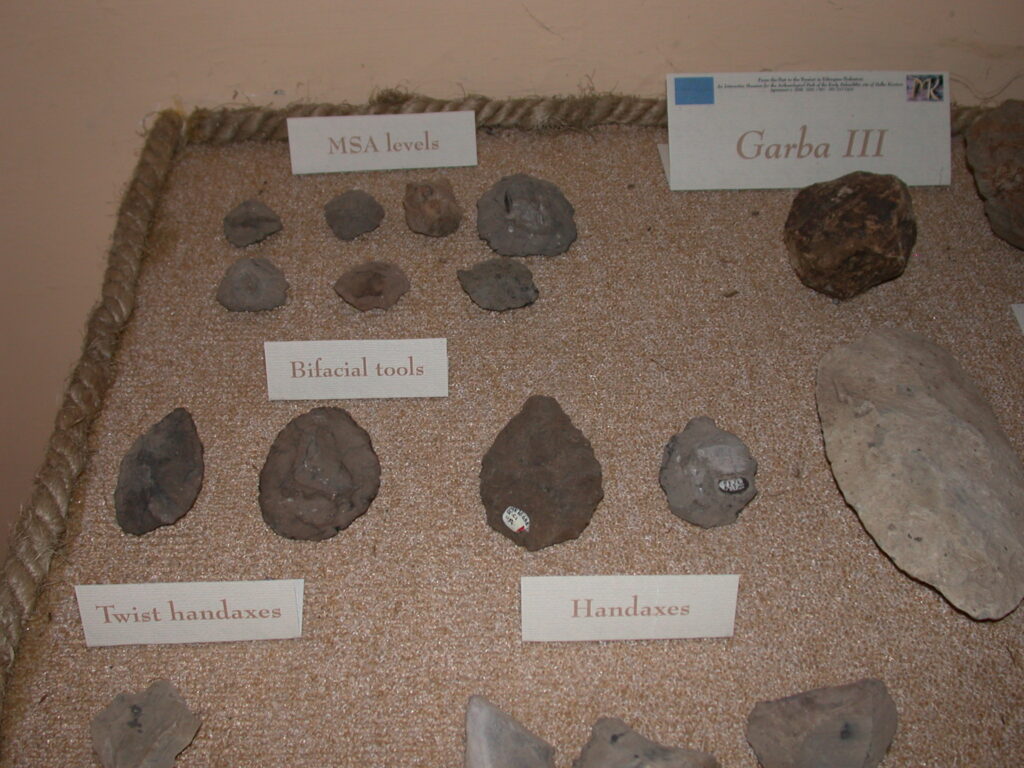
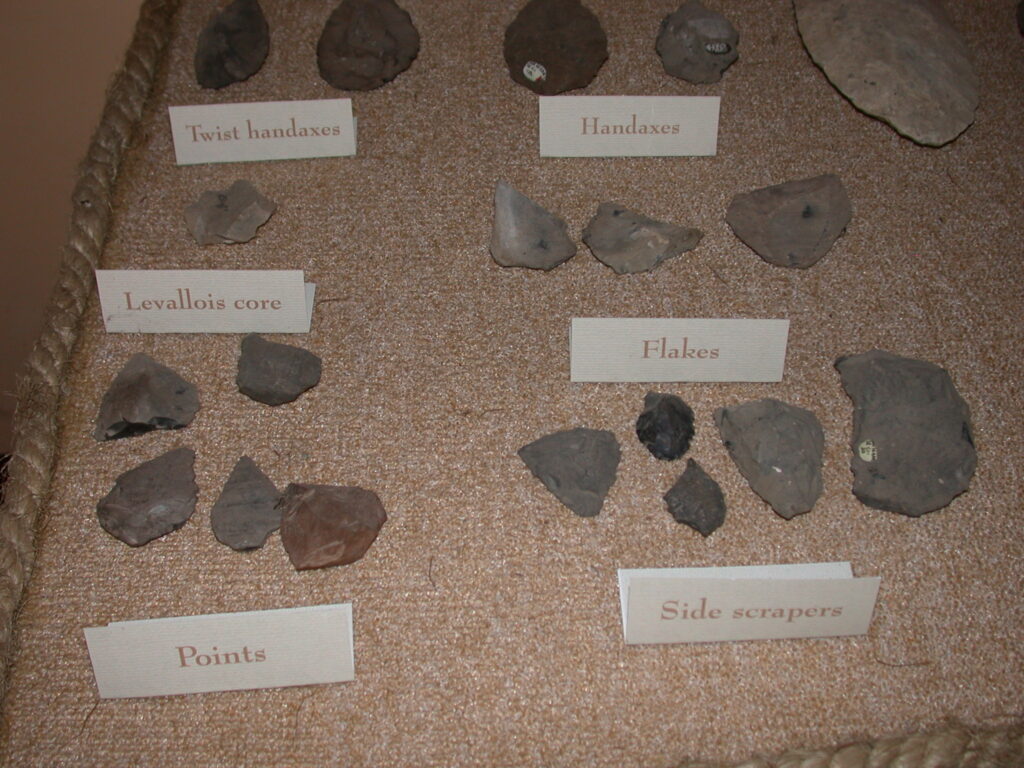
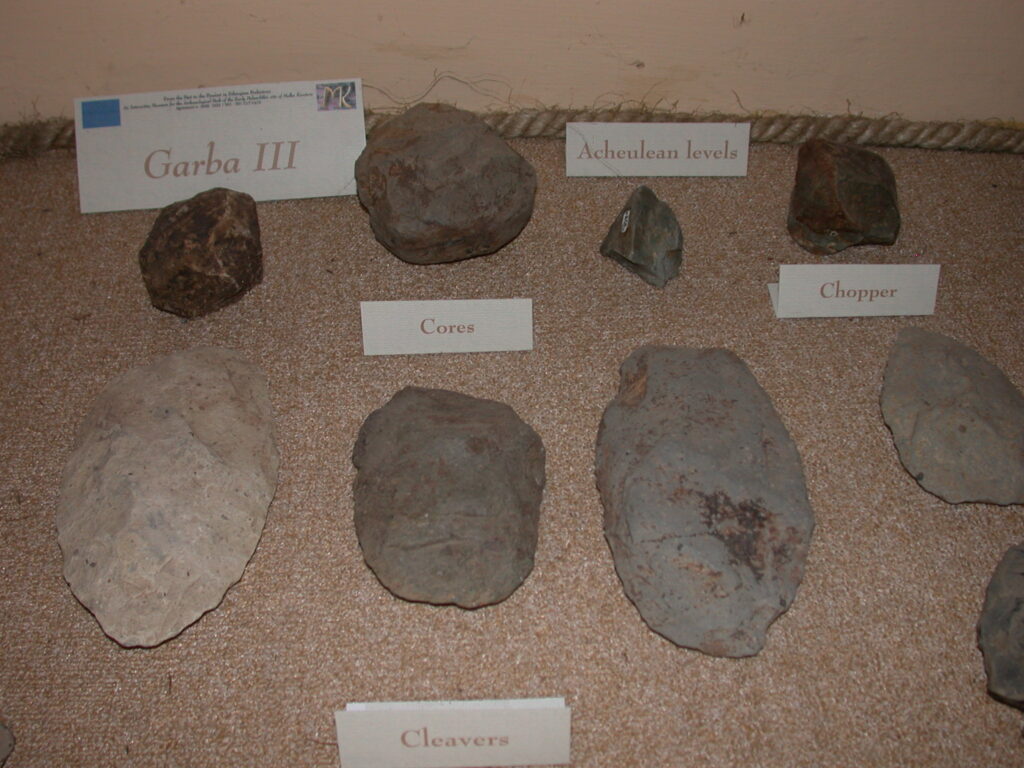
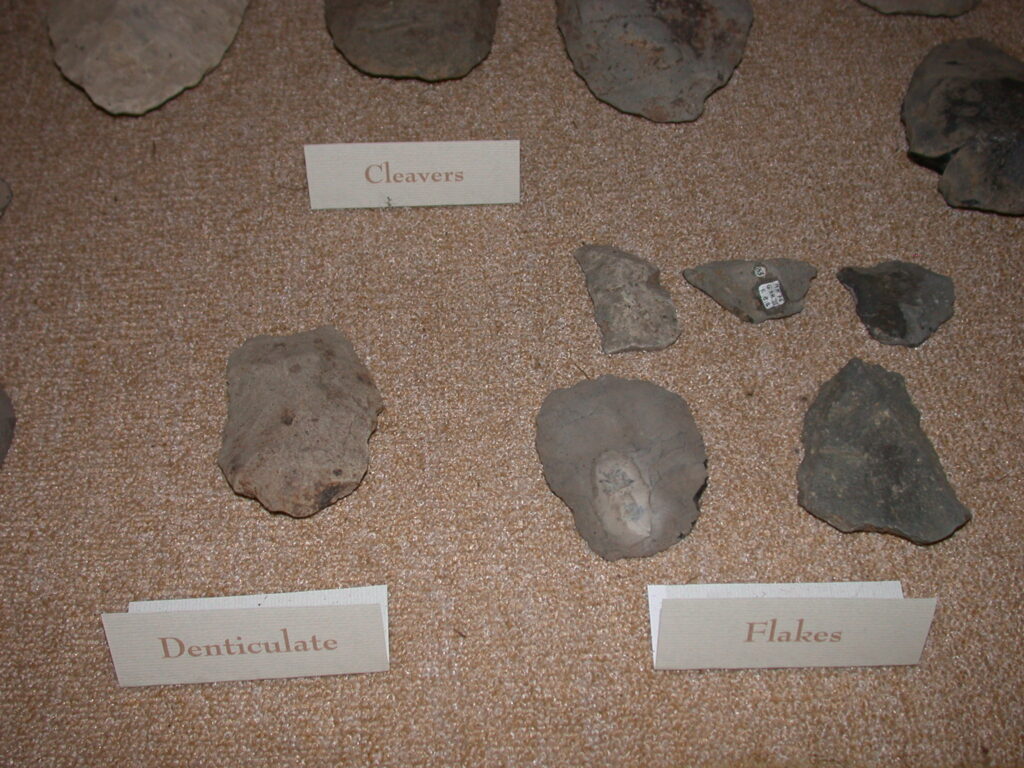
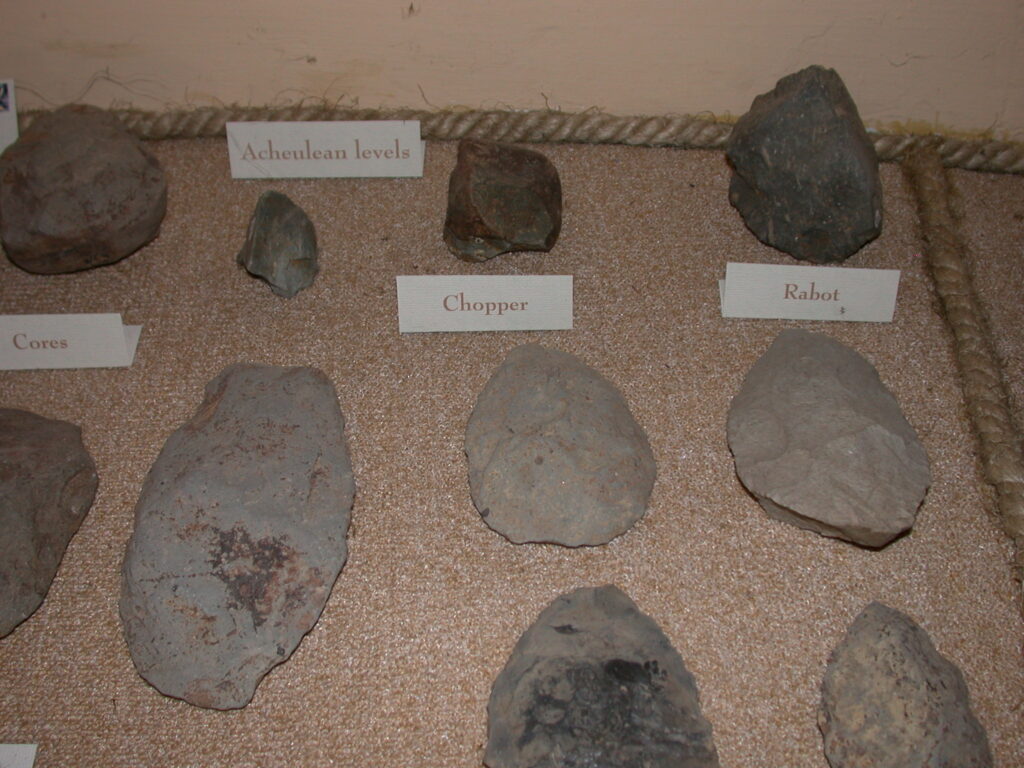
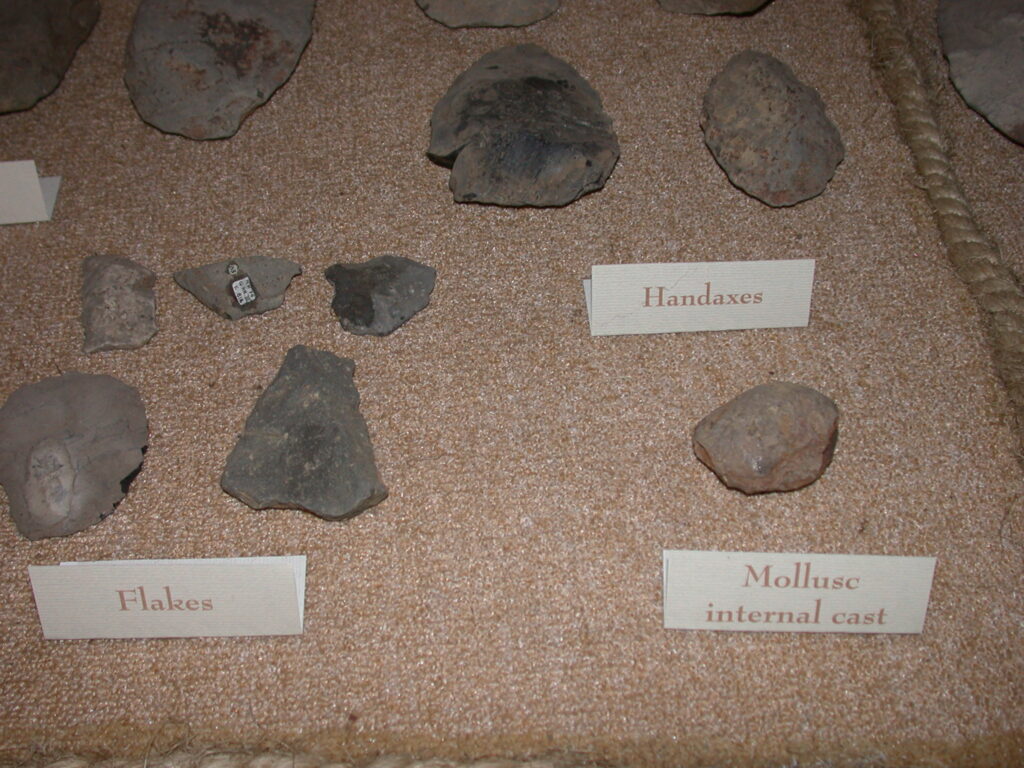
After finishing with the tukul exhibits, the staff bring the visitor out to view a couple of the actual excavation sites. Archaeologists are not currently excavating these sites, but may return next season for further investigations.
